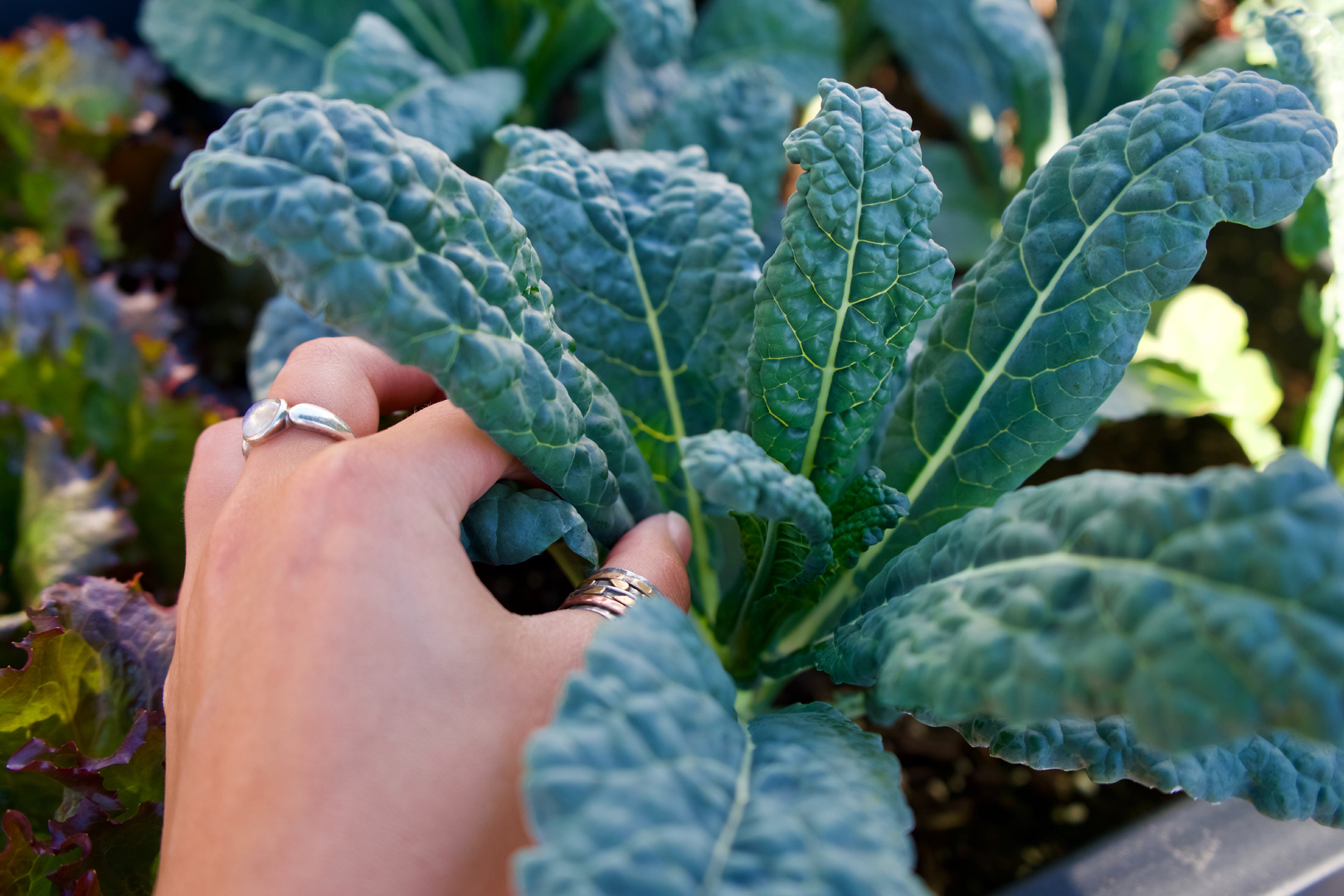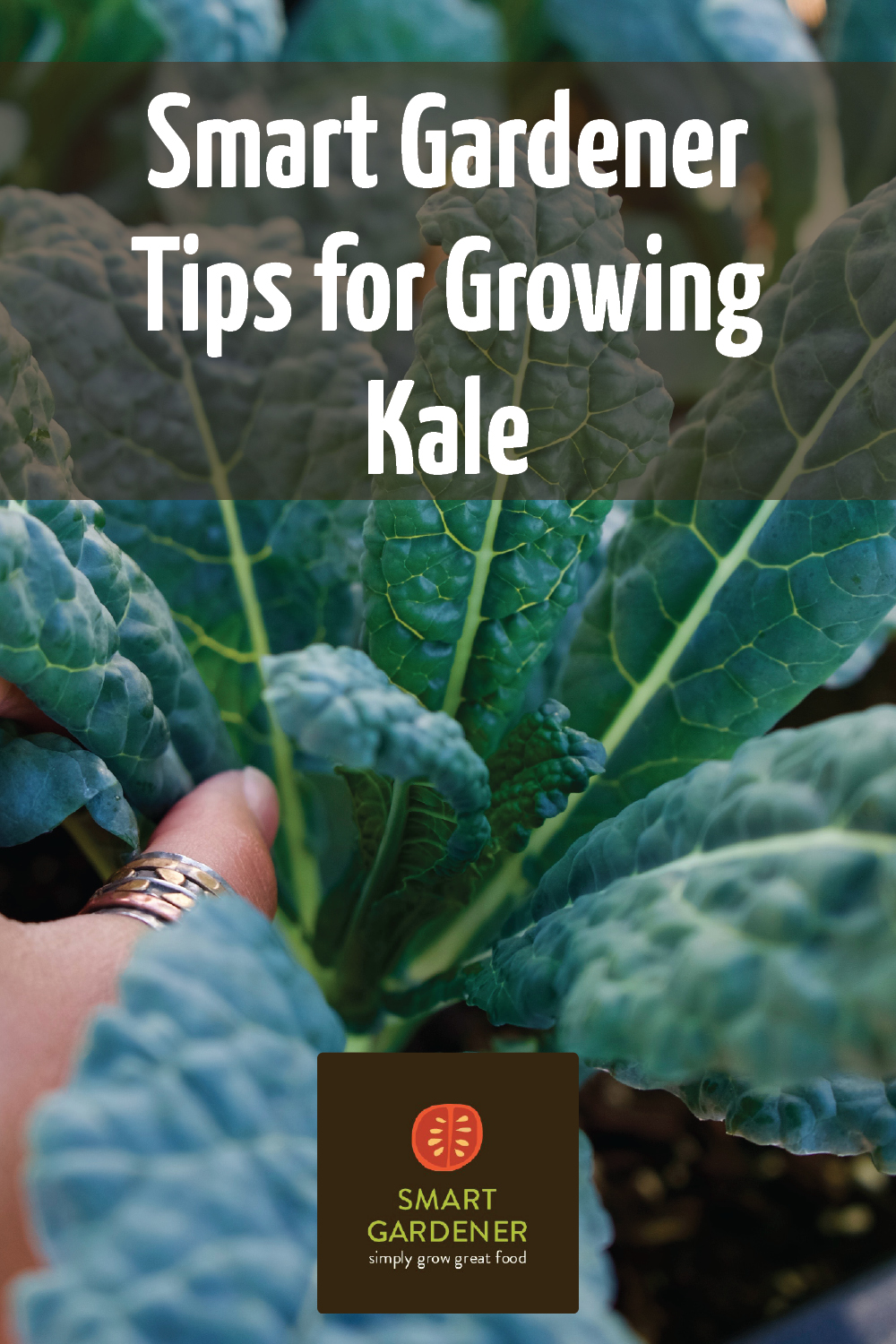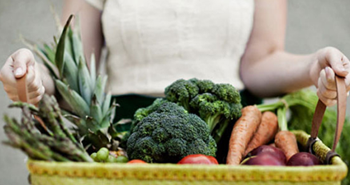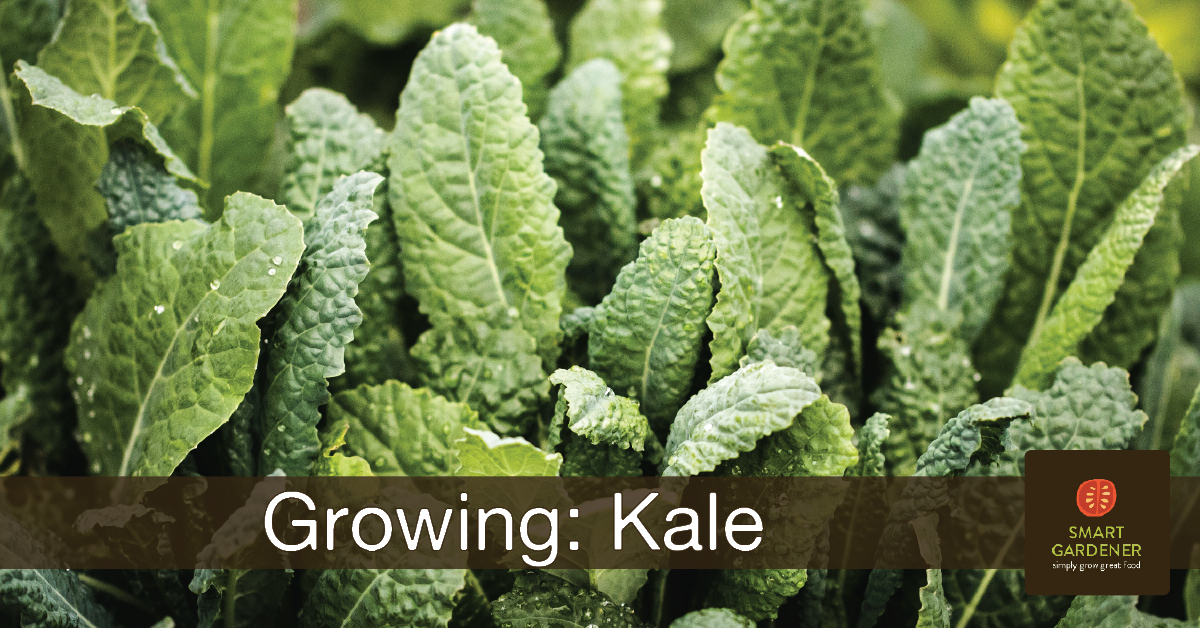 Kale is a hearty, nutritious plant that is easy to grow and perfect for every garden.
Kale is a hearty, nutritious plant that is easy to grow and perfect for every garden.
There’s a reason kale is so popular with the health food crowd: It’s chock full of nutrients. Whether you’re putting it in smoothies, making chips, cooking it in stews or massaging it salads, the uses for kale are nearly endless.
But did you know it’s also one of the easiest plants to grow? And kale fresh from the garden is crispy and sweet and will win over even the pickiest of eaters.
 Kale is considered closer to wild cabbage than most of the other domesticated forms of Brassica oleracea. There are three basic types of kale, with slightly different growing requirements, so finding one that’s perfect your garden is easy!
Kale is considered closer to wild cabbage than most of the other domesticated forms of Brassica oleracea. There are three basic types of kale, with slightly different growing requirements, so finding one that’s perfect your garden is easy!
Below you’ll find our smart tips and advice on growing kale.
Portuguese Kale
This loose leaf variety, Couve tronchuda, originated in Portugal and is almost more like collards (another Brassica) in appearance as well as being more tolerant of warmer temperatures than other varieties. Tender with thick succulent midribs, Tronchuda Beira is milder and sweeter than other Brassicas (broccoli, cabbage, cauliflower, collards, etc.).
Scotch Kale
Scotch kale, Brassica oleracea var acephala, is the most primitive of all the Brassicas and closest to the wild plant. It is famous for its cold tolerance and high nutritional value and was once an important staple food for European peasants. Lacinato (also known as dinosaur kale for its bumpy texture) is a stunning garden plant as well.
Siberian Kale
Siberian kale varieties are more tender and better flavored than the Scotch kales. They aren’t as hardy, however. Red Russian is a delicious heirloom variety with attractive red stems, and very young leaves can be used raw in salads.
Tips for Growing Delicious and Hearty Kale
Soil Preparation
Kale is more tolerant of poor soil than any of the other Brassicas, but the most palatable leaves are produced by rapid uninterrupted growth. For this the soil must be rich and moisture retentive. Kale likes organic matter, so amend the soil by digging in 2″ of compost or aged manure. It also performs best in soil with a neutral pH, so add lime if necessary.
Plant Care
Kale is the easiest of the Brassica family to grow (as well as one of the most nutritious and productive) and is extremely productive for a little work. Its large leaves can lose a lot of water in warm weather, so be sure water the plants regularly and thoroughly for maximum production and best quality.
Once it is established, kale is pretty independent. You only really need to worry about weeds while it is young. Start harvest thinnings when all the seedlings have emerged, and gradually thin them to the recommended spacing to give each plant enough room to spread out. Use a mulch in summer to suppress weeds, keep the soil cool and conserve soil moisture.
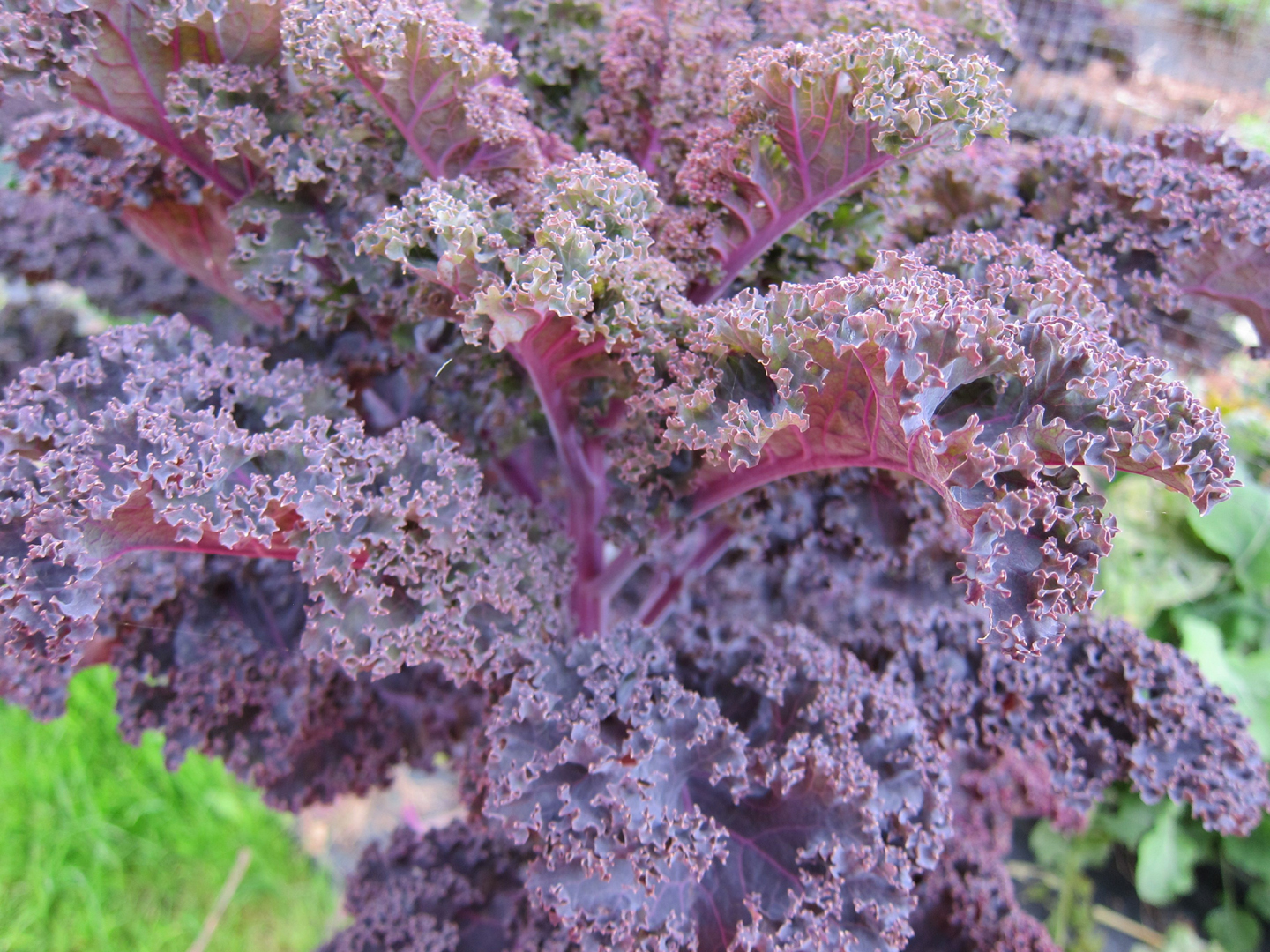 Plant Protection
Plant Protection
In warm weather, aphids are one of the most common pests on most Brassicas. You can spray plants with a soapy mixture, but honestly the simplest way to deal with them is to blast them off the plants with a strong jet of water.
Downy mildew can also affect kale, especially in humid areas, appearing on the underside of leaves. You can control it by improving air circulation and keeping the leaves dry when watering. If you must use overhead sprinklers, then water in the morning or early evening, so plants don’t stay wet all night. Spores overwinter on crop debris, so clean up the beds between crops, and rotate plants seasonally.
As for other pests, there are several types of caterpillars that live only on Brassicas. Many of these can strip a young plant almost overnight. Additionally, some birds, especially quail, seem to have a particular affection for kale. In winter they will eat all of the leaves. In both cases you may have to place nets over the plants to get a decent harvest.
Pollination and Seed Saving
Plants overwintered in the ground will flower the following spring, which gives you a good opportunity to save seed. Kale is usually self-incompatible and must be cross-pollinated by insects. It will cross-pollinate with any other Brassica crop (broccoli, cabbage, cauliflower, etc.), so only one variety should be flowering at one time.
The plants produce an abundance of seed and can sometimes get so top heavy they need staking to stop them falling over. The seed is produced in long pods and should be gathered when the older bottom pods begin to split open.
If you save kale seed (and you should!) you will end up with a lot. Since you need seed from at least 5 plants to maintain genetic variability, and each plant makes thousands of seeds, you will have far more than you will ever need for planting. Fortunately, you can sprout some of it like alfalfa, or use it to grow micro-greens.
Alternative Growing Options
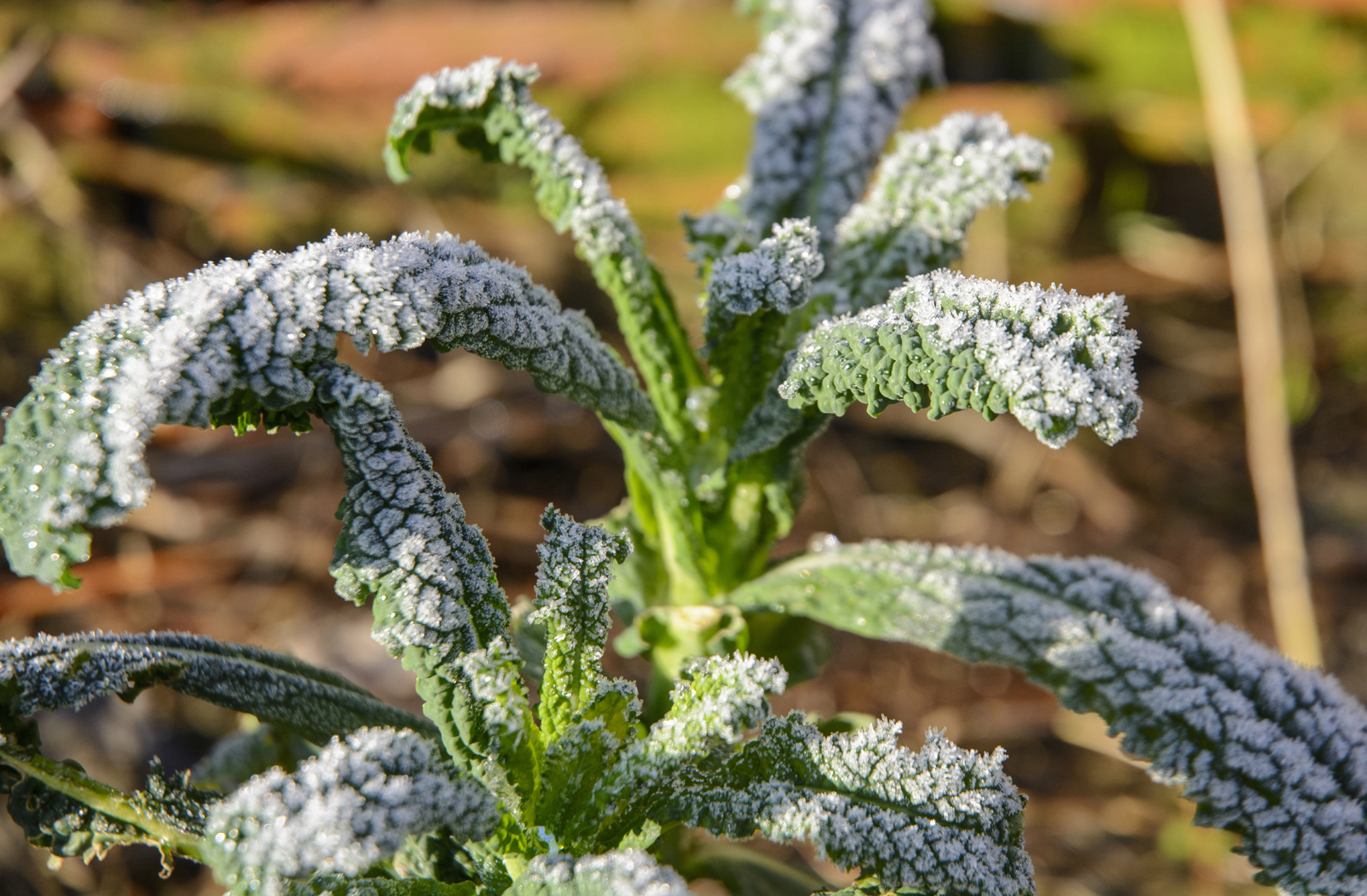 Cover crop
Cover crop
Kale is sometimes planted as a green manure or winter cover crop. In areas with mild winters it will produce a lot of foliage over the winter with the bonus that you can eat it! In spring the flower buds can be eaten like broccoli before incorporating the plants into the soil.
Ornamental use
Some kale varieties have very attractive foliage and would be at home in the flower garden. The specially-bred ornamental kales are technically edible, but they are more beautiful than they are tasty.
Winter garden
In mild climates, you can grow kale in a winter garden. In areas with hard freezes, though, it will need some protection. It can be grown in a greenhouse or cold frame, and can even be grown as a houseplant.
Smart Gardener makes it easy to start a garden. We can help you decide which type of kale will work best in your garden and give you the advice you need to get started, and then send you weekly to-dos to keep you on track!

